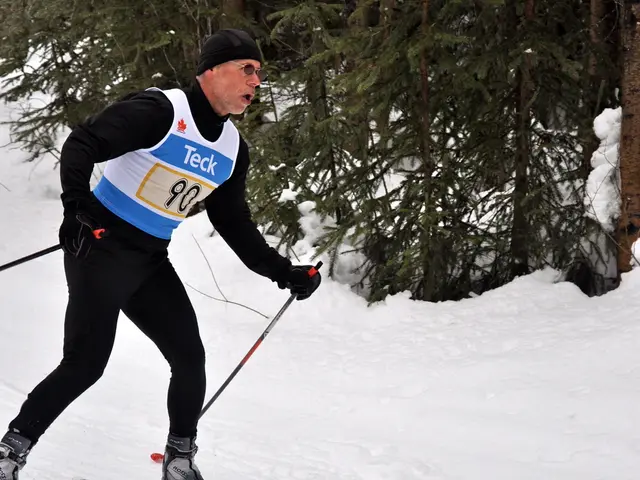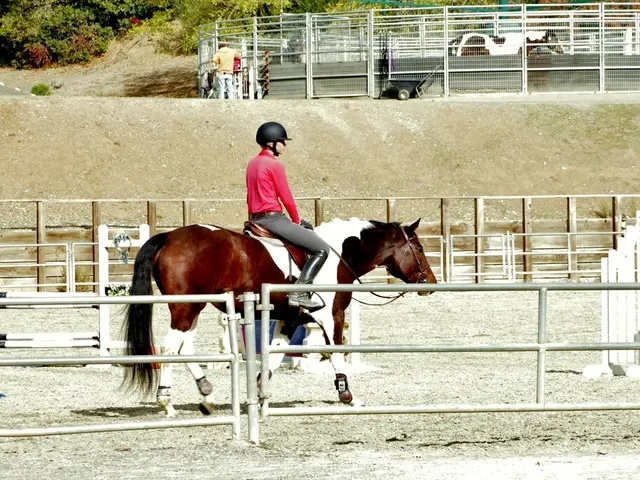Summers in Japan might halt organized sports within school districts by the 2060s due to potential effects of global warming.
Here Comes the Sizzle: Japan's Summer Sports Predicament
Brace yourself, sports fans! By the 2060s, summer afternoons in most parts of Japan may become the graveyard of outdoor sports, according to a chilling prediction by a research team.
In the gloomiest scenario of global warming, the team's heat stress projections hint that you'd best steer clear of intense outdoor sporting activity between 3 p.m. and 6 p.m. in July and August, with the exception of Hokkaido.
Japan's after-school activities usually kick off in the late afternoon, but by the mid-century, they might just need to hit the books instead.
Hailing from the National Institute for Environmental Studies and Waseda University in Tokyo, the research squad conjured up a projection model that factors in weather data - temperature, humidity, wind, solar radiation, and a nifty heat stress metric called the wet-bulb globe temperature (WBGT). They ran their simulations in 842 cities across Japan over a 12-year period.
According to these simulations, the WBGT heat stress figures in 11 regions of Japan starting from the 2060s to the 2080s will soar under different scenarios. One scenario is when greenhouse gas emissions are drastically slashed, and another when our dependence on fossil fuels is high.
In the deepest, darkest corners of the global warming abyss, the projections show heat stress indices of 31 or more in four regions: Shikoku, northern and southern Kyushu, and Okinawa. At 31, that's a red flag advising against any outdoor sports, man.
Six regions - from Tohoku to Chugoku - aren't quite as bad, with heat stress indices between 28 and 31. That means any intense sporting activities should be put on ice.
Between 7 a.m. and 9 a.m., it's all good news for sports enthusiasts, except in August when all regions, except for Hokkaido, should avoid intense sports during those hours.
Takahiro Oyama, a researcher at the institute's Center for Climate Change Adaptation, is all too aware of what this means. "These findings give us a glimpse into how our daily lives will alter in the face of global warming," he warns. "We need to start brainstorming about how future club activities should be."
These dire predictions haven't deterred the annual Koshien national high school baseball tournament, which already adopted a two-session system to shield against the summer heat, splitting some of the schedule into morning and late afternoon games.
But if our planet keeps warming, it could be more than just sports weekends in peril. Public health could be at stake, with time and venue changes likely needed to keep things cool. It's a hot mess this global warming thing, don't you think?
[1] "Without significant emission reductions, intense outdoor sports activities between 3 p.m. and 6 p.m. during July and August in most regions outside Hokkaido may need to be halted by the 2060s."
[2] WBGT models suggest that fossil fuel-dependent pathways would render late-afternoon extracurricular activities unsafe in most regions.
[3] Japan reported record-low greenhouse gas emissions for FY2023, nudged by renewable energy expansion and reduced industrial output.
[5] Record-breaking heat, including Tokyo's hottest summer in 2024, indicates warming trends are outpacing policy-driven emission cuts.
[4] Science warns that the environment in Kyushu, Shikoku, northern and southern Kyushu, and Okinawa may become too harsh for any outdoor activities, including sports, by the mid-century due to extreme climate-change conditions.
[6] Due to climate change, Japan's environmental-science researchers are advocating for preventative measures and adaptations in various sectors, such as school activities, sports, and public events, to ensure a safer and more comfortable future.
[7] Given Japan's severe climate-change projections, there is an urgent need for the sports community to incorporate adaptive strategies, like adjusting the schedule for games, implementing heat management policies, and exploring new technologies such as AI-assisted cooling systems.
[8] By examining sports-analysis data and climate-change research, it becomes evident that mitigating greenhouse gas emissions and transitioning to renewable energy sources can considerably improve the safety and accessibility of outdoor sports in the future.







